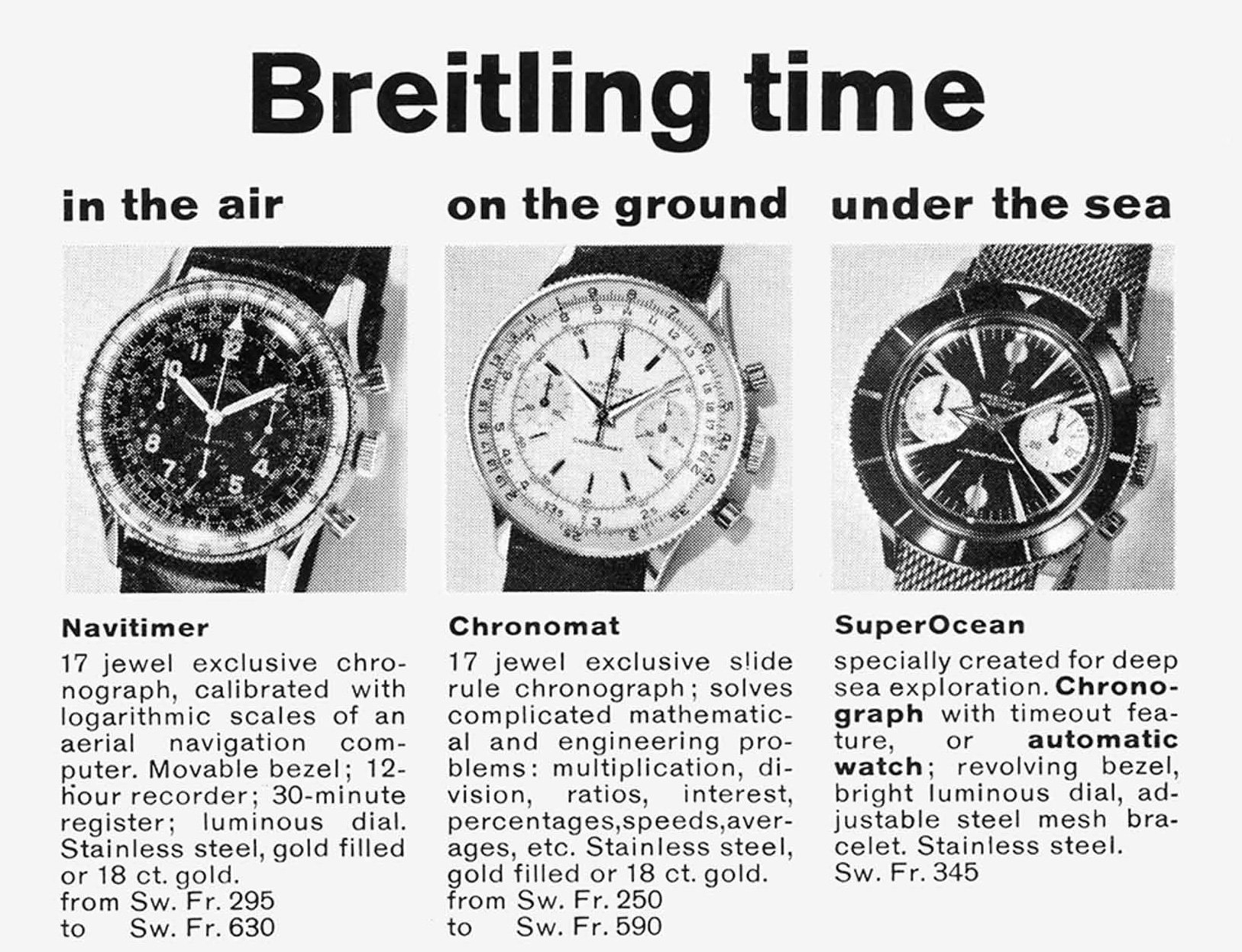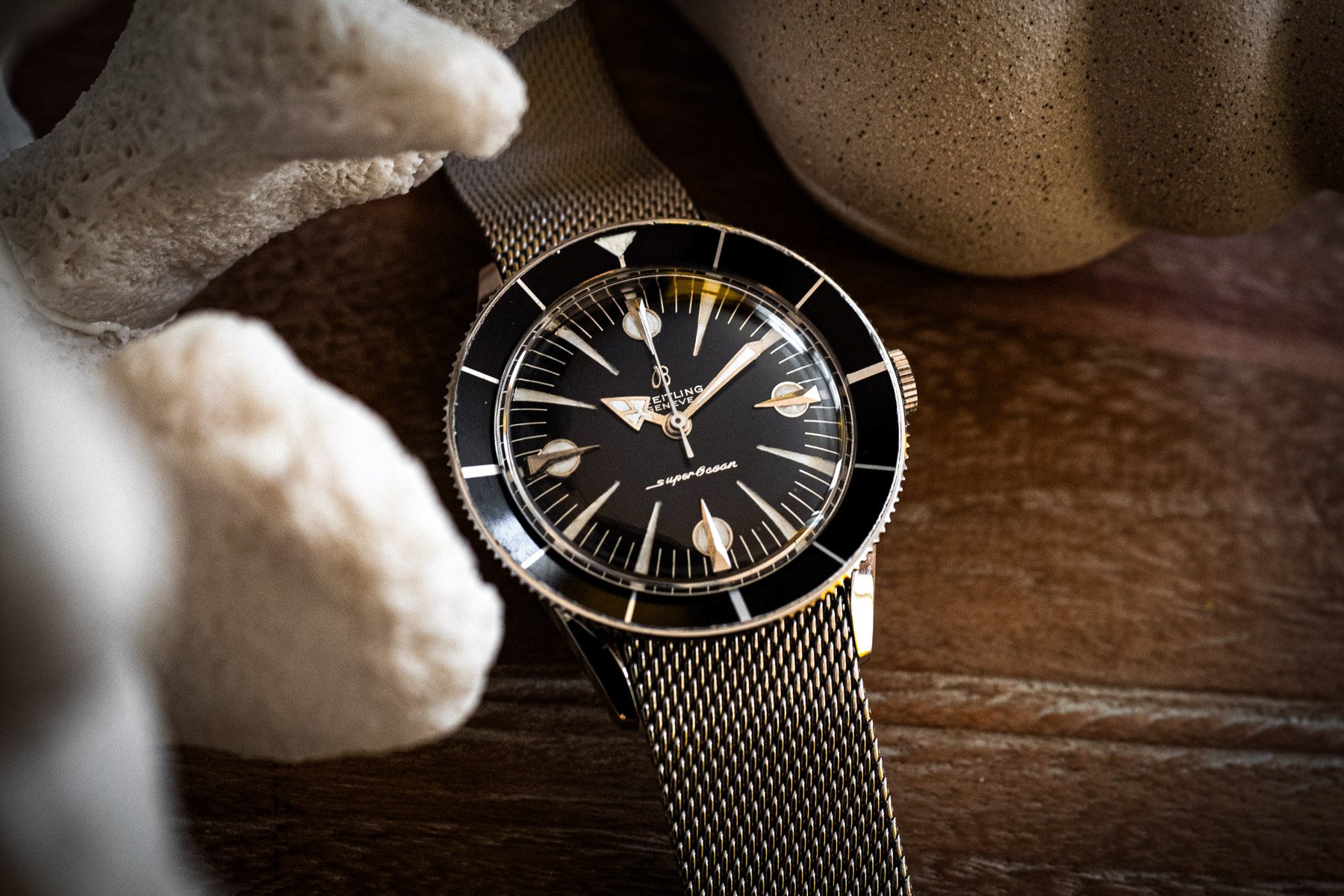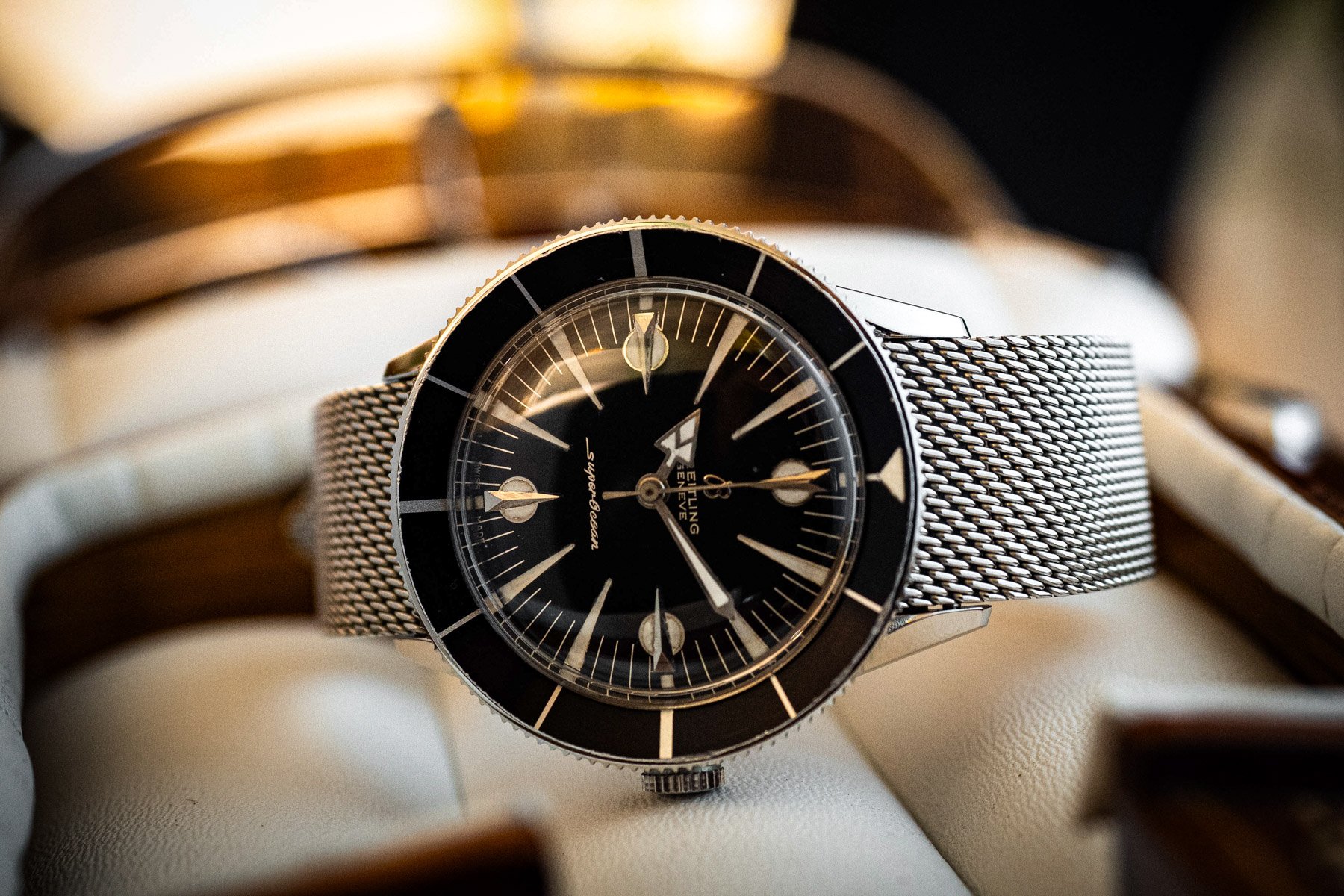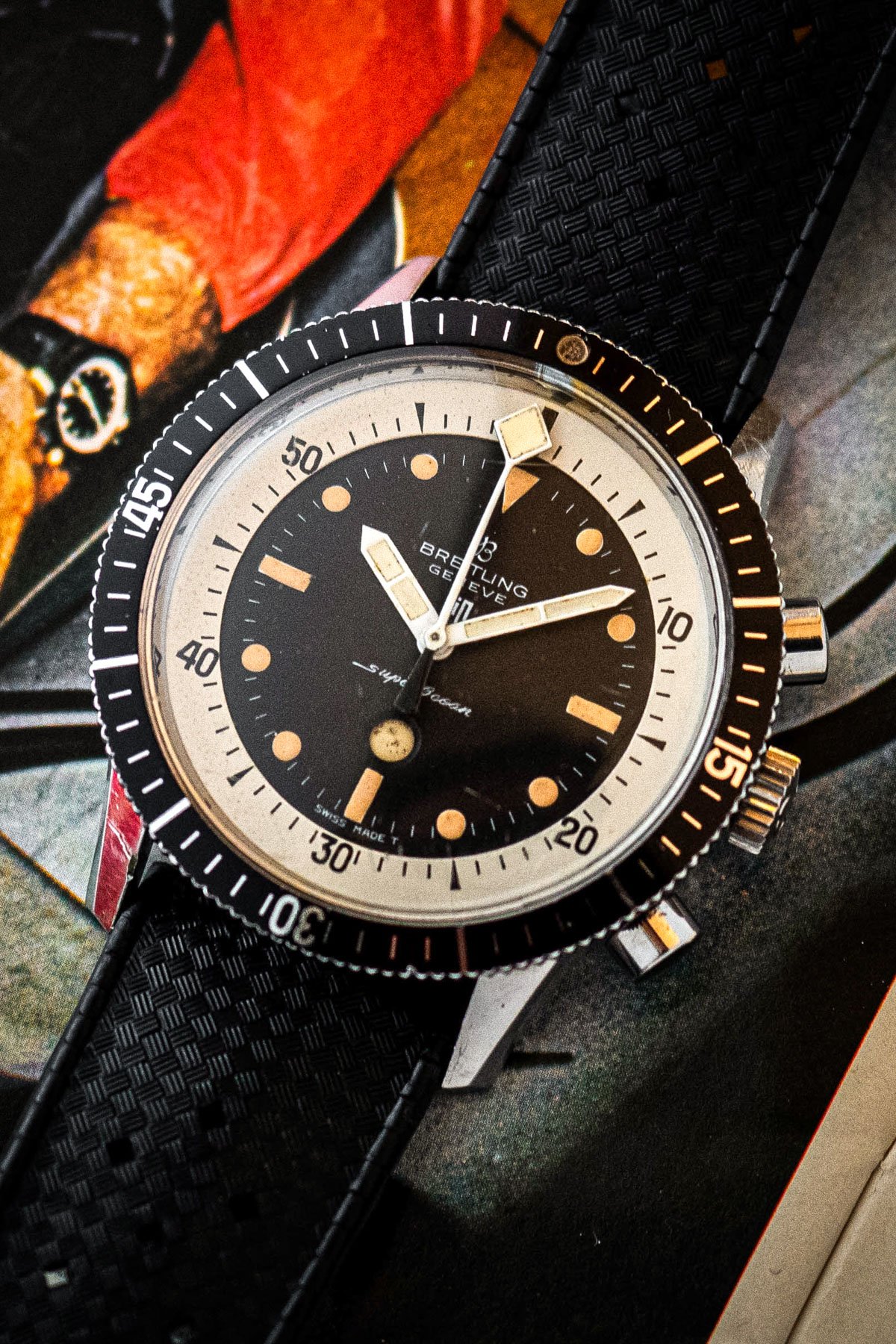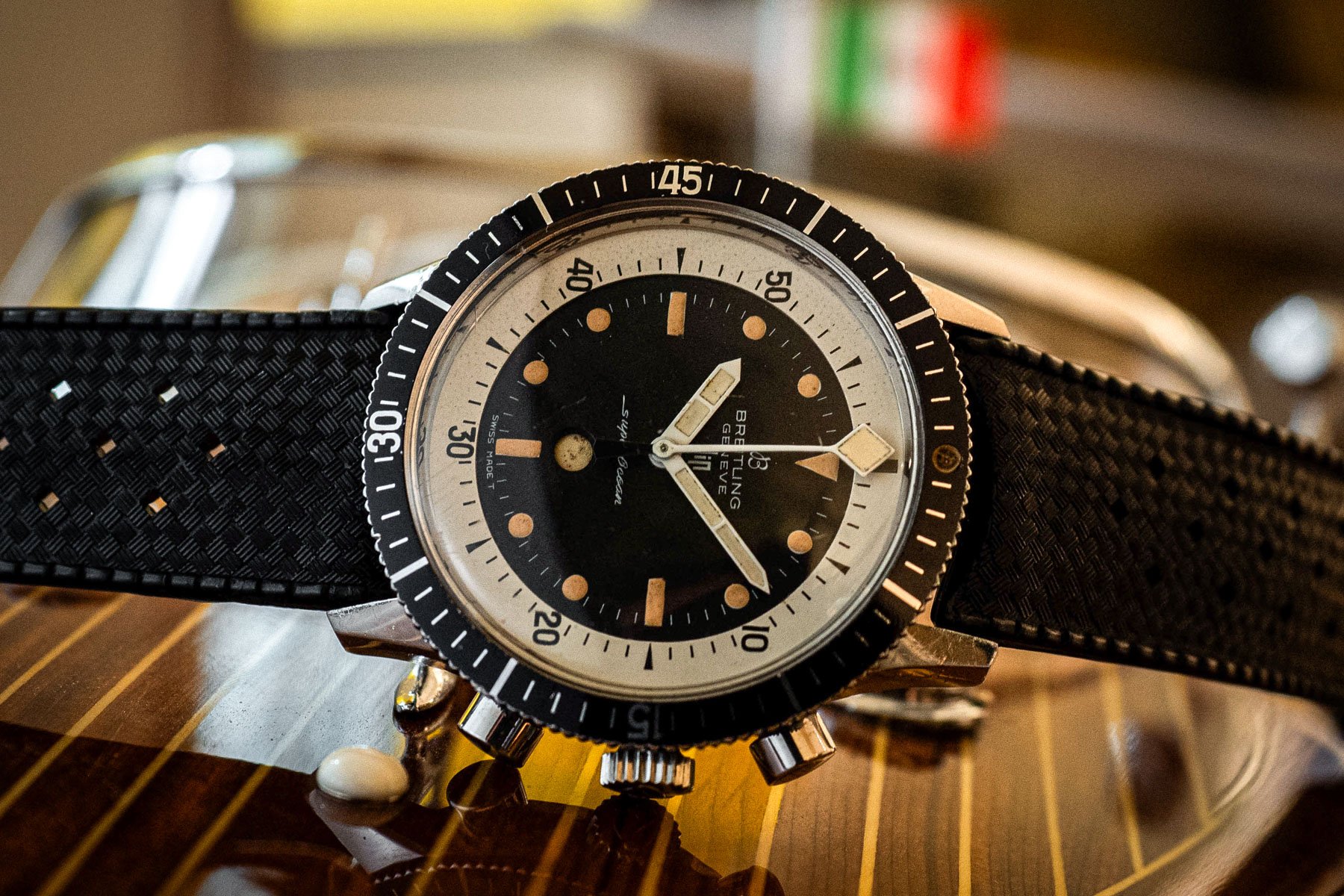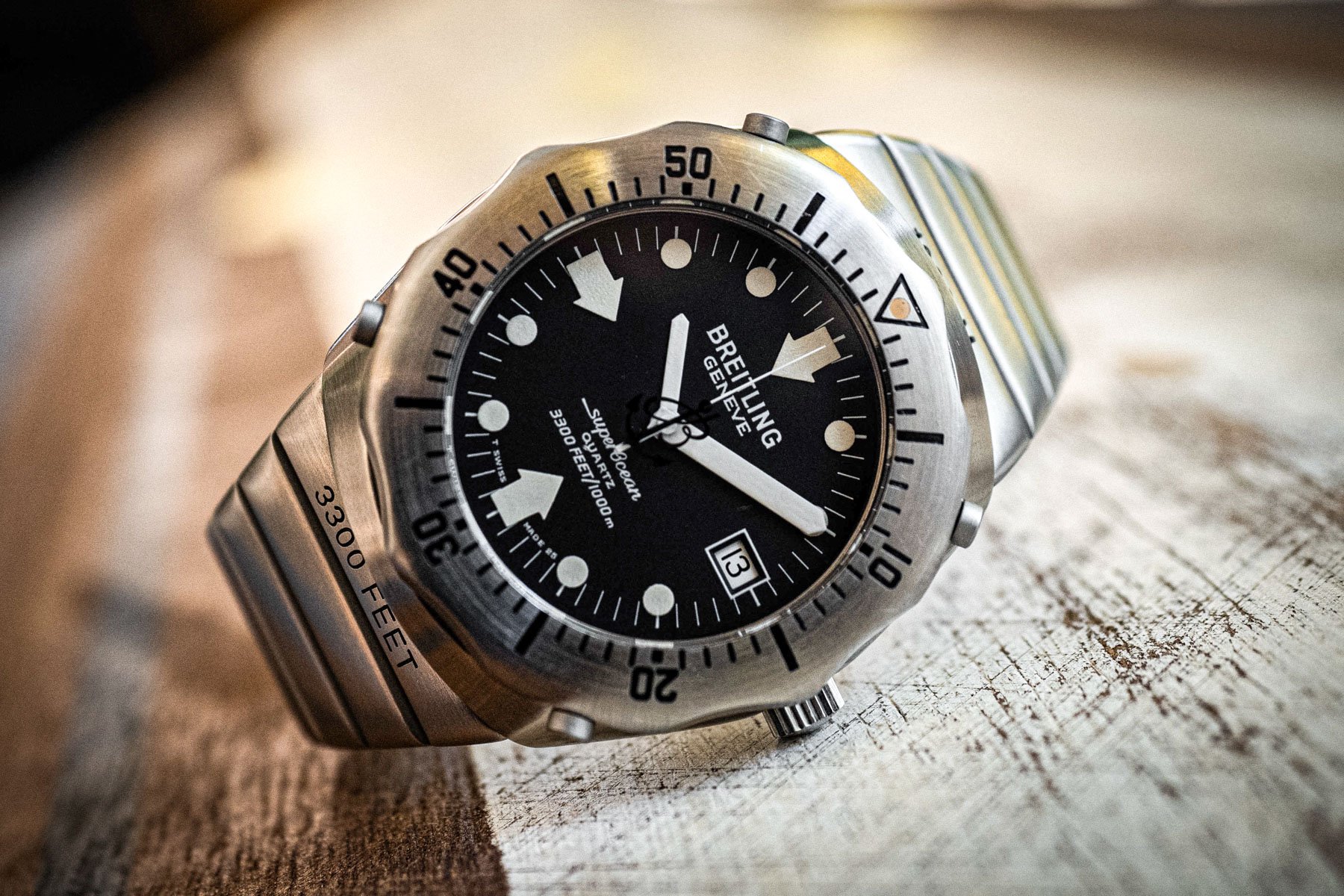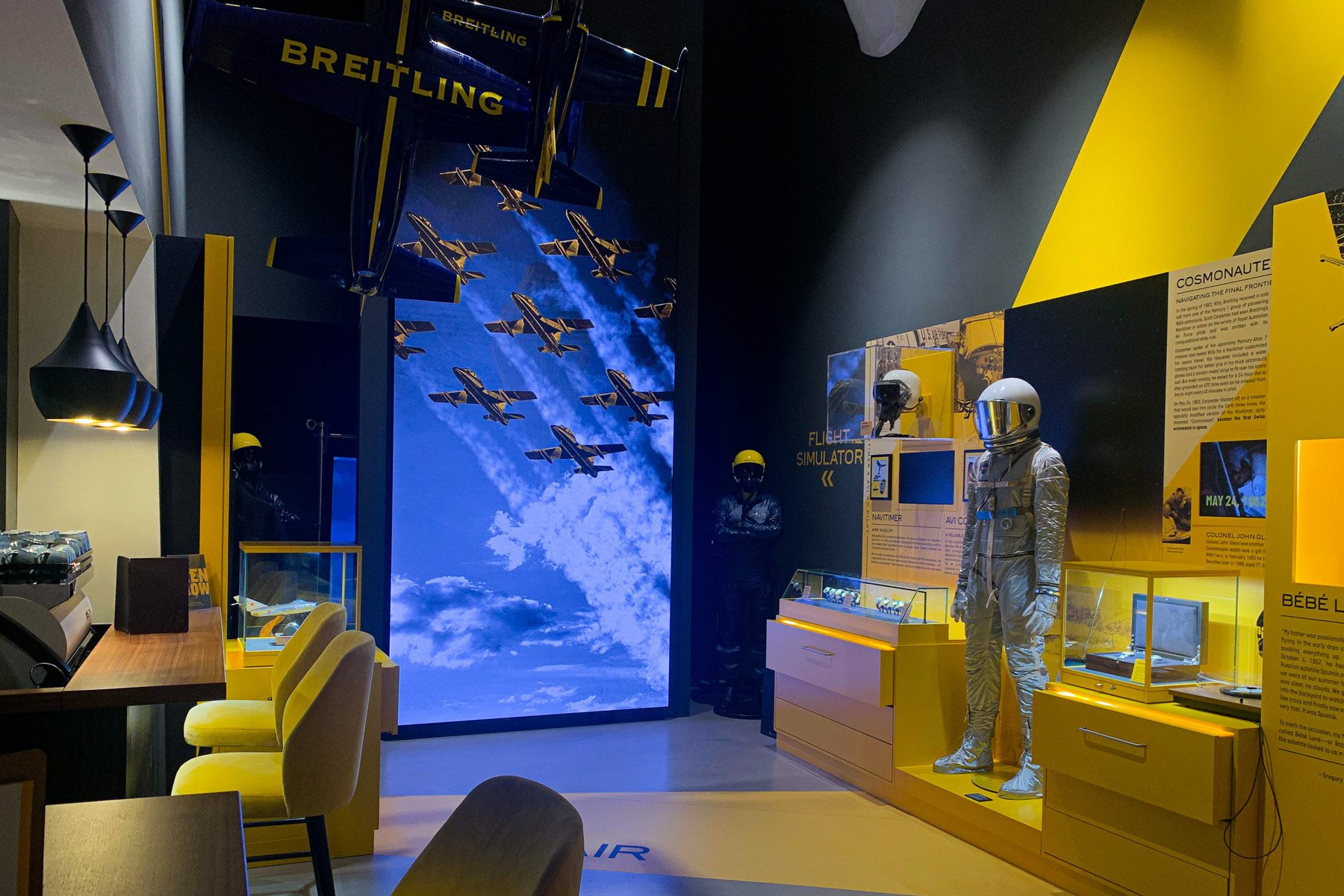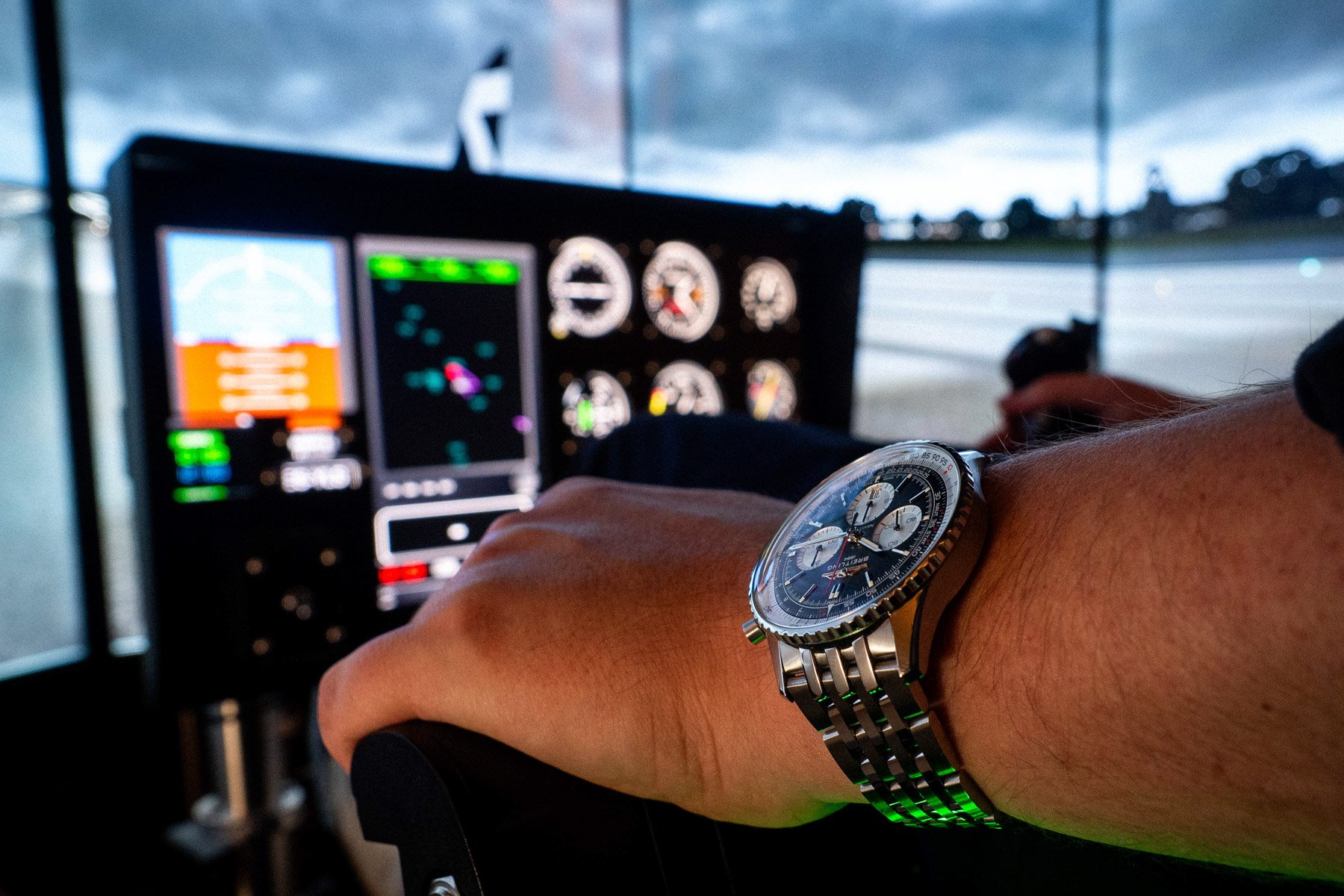The Breitling Pop-Up Museum In Zurich And Why You Should Visit — Chapter 1: Sea
To celebrate 140 years since its founding in 1884, Breitling has opened a pop-up museum in the heart of Zurich, Switzerland. It stands proudly inside a historically significant building on Zurich’s Rennweg, just 200 meters from Breitling’s flagship boutique. Remarkably, this newly opened museum is the only brand-specific museum in Switzerland’s largest city. The museum spans three floors and comes equipped with a full-blown bistro and café/bar, multiple interactive activities, a time tunnel, and, of course, plenty of important watches spanning 140 years of heritage.
Then and now: returning to Willy Breitling’s three themes
In today’s article, we will be focusing on three of this museum’s gems from Breitling’s core Sea collection. It’s no secret that under Breitling’s previous ownership, the brand’s focus was on aviation watches. This is because Ernest Schneider, who purchased the brand from Willy Breitling, had a deep love for all things aviation. Under Georges Kern’s leadership from 2017 onwards, there has been a heavy emphasis on returning to the three fundamental themes of air, land, and sea, which Willy Breitling had set as cornerstones of his brand. The Breitling pop-up museum is a magnificent journey through time that displays to visitors how essential water-capable timepieces were throughout the history of the brand.
Breitling SuperOcean ref. 1004 — 1957
This exact Breitling SuperOcean ref. 1004 is about as legendary as a Breitling dive watch can be. It may look familiar since there’s a very faithful reissue in today’s catalog, the Superocean Heritage ’57. As the name of that line suggests, the original SuperOcean ref. 1004 debuted in 1957 and stood proudly on its own as a distinctive and overly utilitarian dive watch. The design of the emblematic crystal-protecting concave bezel, which starkly protrudes from the case, makes it easy to grip with or without gloves.
The symmetrical dial bears the stylish and ever-legible signature markers at 3, 6, 9, and 12. And finally, there is the case-hugging Milanese bracelet. This intricately designed mesh disguises scratches while flowing seamlessly around the wrist. These aspects give birth to a striking design in which form follows function.
Beatrice Breitling’s watch
Breitling has historically specialized in chronographs, making the SuperOcean ref. 1004 a bit of an anomaly in its mid-century catalog. Still, under Willy Breitling’s leadership, this watch made it onto the market and has become extraordinarily desirable among collectors of vintage watches. The example you see pictured here was Willy Breitling’s wife Beatrice’s very own Superocean ref. 1004. Along with the provenance and like most other pieces in the museum, the condition is superb, putting it comfortably in the first entry of this trio of historical Breitling timepieces.
Breitling SuperOcean “Slow-Motion” ref. 2005 — 1964
It would be downright blasphemous to speak of vintage Breitling dive watches without mentioning the SuperOcean ref. 2005. As with the prior entry, there is a watch in today’s catalog that borrows design elements from this reference. The white chapter ring of this SuperOcean and the bezel with the 15-30-45 markers have inspired today’s Superocean Automatic. Again, instead of reinventing the wheel, Breitling drew inventiveness from its rich back catalog while utilizing current-day tech and materials.
Where this watch differs from its contemporary counterpart is the complication. You will notice this SuperOcean ref. 2005 features chronograph pushers. You would be right to assume it’s atypical for a chronograph to lack sub-dials. Moreover, you would be wrong to assume that this is a single-minute chronograph. This SuperOcean features an interesting party trick — an aperture above the 6 o’clock marker that changes color depending on whether the chronograph is active, paused, or off. This is because the diamond-tipped, lume-filled hand is the chronograph minute hand, which doesn’t move until a minute passes (hence, the “Slow-Motion” nickname). This aperture is crucial to let the user know the chronograph is running. Again, with form following function, legibility was key, so using the bold white chapter ring in conjunction with the chronograph minute hand was a conscious decision.
Distinct, legible, and avant-garde
For those of you knowledgeable about chronographs (I’m aware there are plenty of you!), you’ll know case openings and water are enemies. Consequently, this is a watch of yesteryear and one we are unlikely to see in future iterations of the Superocean line. That said, this is a fascinating relic of Breitling’s past and evidence that the brand was constantly challenging itself and the industry.
Breitling SuperOcean “Deep Sea” ref. 81190 —1983
The final entry of this series is an oddball in Breitling’s water-themed collection. I had mentioned that the focus under the Schneider family was aviation, but this didn’t mean that the brand ignored dive watches completely. After all, this SuperOcean “Deep Sea” ref. 81190 was unveiled just four years after Ernest Schneider took the reins of the company. This is confirmed with the then-newly introduced anchored “B” logo sitting proudly atop the central pinion. This watch was an intense piece of kit at the time, and its design language suggests exactly that. It boasted an incredible 1,000m depth rating thanks to a helium release valve integrated into the case back. The watch even came with tools that allowed the user to remove the large screws on the bezel to detach it.
Like many watches released at the tail end of the Quartz Crisis, this one uses a battery-powered movement. The SuperOcean “Deep Sea” certainly won’t win any horological beauty competitions, but like many other Breitling timepieces, it stands as a marvel of engineering and uses a movement considered the future of watchmaking at the time. The integrated bracelet is something we seldom see on Breitling watches, but I dare say it could be due for a revival sometime soon!
Why you should visit the Breitling pop-up museum
Very much akin to Breitling’s bold designs of past and present is the leadership under Georges Kern since 2017. You wouldn’t be crazy to assume it to be wild to open a three-story museum while employing specialists to run it in the heart of the largest city in the country. After all, no other brand dares to do something this bold. But isn’t this apparent lack of logic exactly what watchmaking is about? These aren’t things we need to survive, but they’re things that make us happy. As the nature of this establishment suggests, the staff is there to share enthusiasm around Breitling’s history and inform the visitors of the “why” behind Breitling’s watches.
A watch lover’s pit stop
On that note, having been to the museum several times, I strongly encourage you to visit. There is no entrance fee, the staff is passionate, and there are countless fun activities (including a professional-grade flight simulator), captivating stories, merchandise, and genuinely good food! It is just 25 minutes from Zurich airport, so it’s easy to visit during a lengthy layover or a weekend trip. As things currently stand, the Breitling pop-up museum will stay until the end of April 2025, so be sure to visit before then. Let us know your thoughts on these three historically significant Breitling watches!

